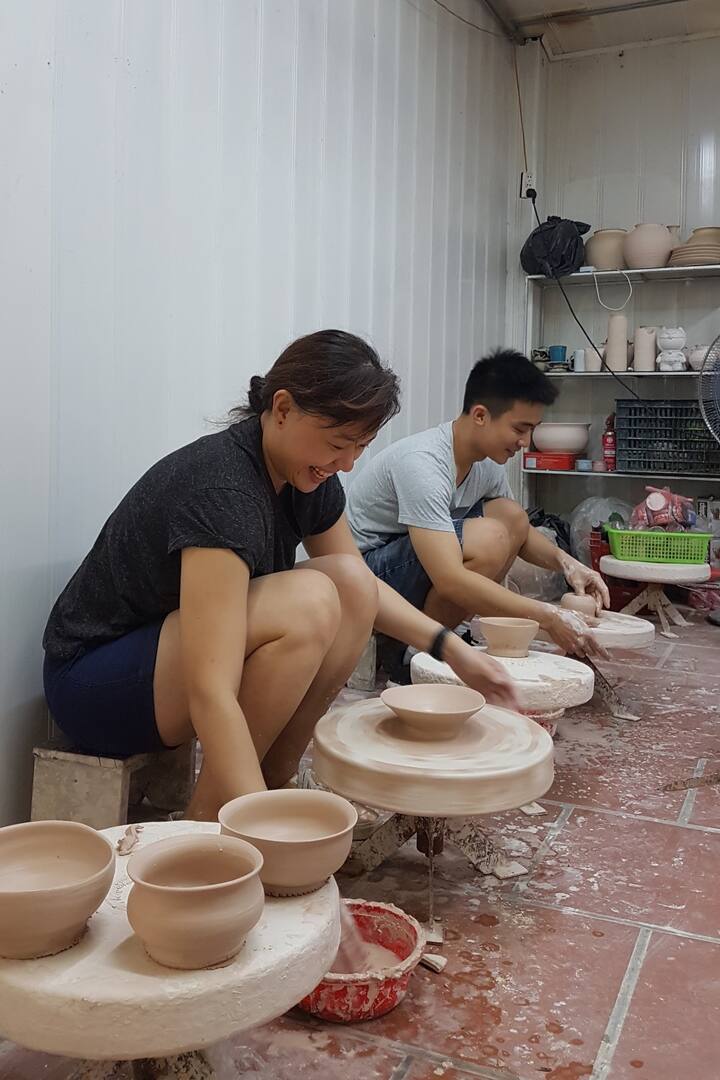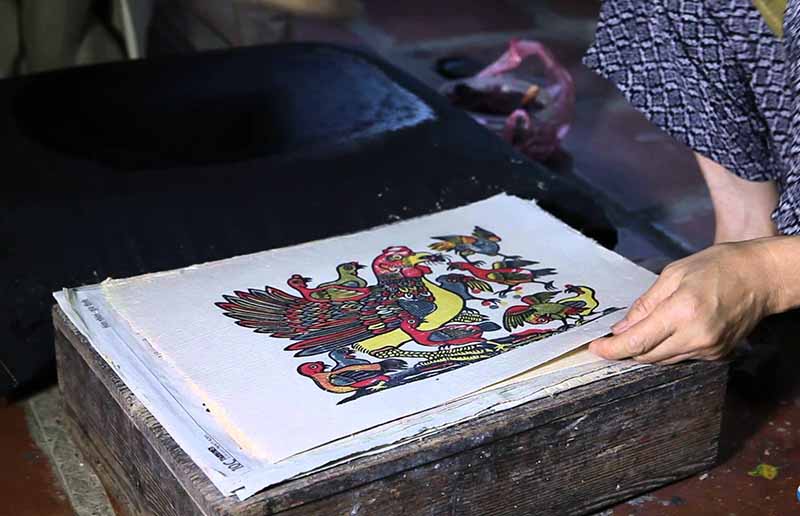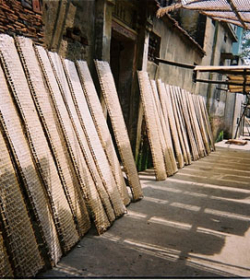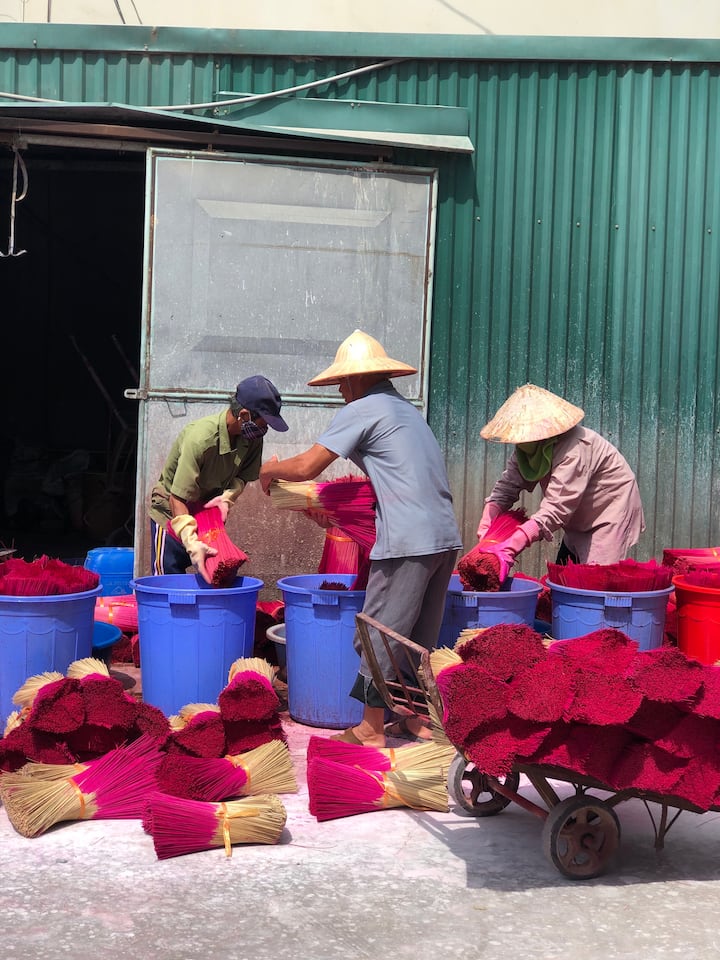Vietnam is a land of diverse traditions, cultures, and crafts that have been carefully nurtured over centuries. Vietnam is famous for its Ha Long Bay limestone karsts, it's eggy coffee, steamy pho, beaches, Buddhist temples, and the largest cave in the world.
Just outside the bustling capital city of Hanoi lies a treasure trove of artisan villages, each weaving a unique thread into the rich tapestry of the nation's heritage. These villages are not just places to witness traditional craftsmanship; they are living testimonies to the skill, dedication, and creativity of generations of artisans.
The Vietnamese government has implemented regulations and guidelines to ensure that craft villages maintain their traditional practices and cultural authenticity:
1. Regulations help prevent commercialization and excessive tourist-focused alterations. Initiatives that support local artisans and their craftsmanship are vital.
2. Providing training, workshops, and opportunities for artisans to pass down their skills to younger generations helps keep the authenticity of the craft alive.
3. Educating tourists about the historical, cultural, and social significance of craft villages can foster respect for the local traditions. This not only enhances the tourist experience but also discourages behavior that could turn the village into a superficial attraction.
4. Encouraging a balanced approach to tourism development ensures that craft villages remain authentic. This includes promoting other aspects of the village beyond crafts, such as local cuisine, traditional performances, and lifestyle.
5. Involving the local community in decision-making processes and benefits from tourism activities helps them take ownership of preserving their cultural heritage. This can lead to sustainable practices that respect their traditions.
6. Focusing on quality tourism experiences rather than mass tourism can help keep the charm of craft villages intact. High-quality experiences attract travelers interested in learning about local culture and crafts.
7. Ensuring that tourism activities do not harm the natural environment is crucial. Craft villages often rely on natural resources for their crafts, so environmental conservation is intertwined with preserving the authenticity of their products.
8. While preserving tradition is essential, allowing some modern elements to coexist can help craft villages adapt to changing times without losing their essence.
Vietnam is famous for these traditional craft villages:
1. Bat Trang pottery village
L to R: 1. Enjoy making pottery in ancient town, 2. Bat Trang pottery ancient village by motorbike
Nestled on the banks of the Red River, Bat Trang Ceramic Village is a world of intricate pottery and ceramics. The village has honed the art of turning clay into exquisite works of art for centuries. From delicate teapots to ornate vases, every piece tells a story of craftsmanship passed down through generations.
Proximity: 35 min SE of Hanoi
2. Van Phuc silk village
L to R: 1. Private full day tour: Hanoi-Thay pagoda-Tay Phuong pagoda-Van Phuc silk village, 2. Half-day Van Phuc silk tour from Hanoi
A short journey from Hanoi takes you to Van Phuc Silk Village, where the rhythmic clatter of looms creates a symphony of silk. Here, artisans weave magic into every thread, producing luxurious silk products renowned across the country. Immerse yourself in the vibrant colors and textures of Vietnamese silk.
Proximity: 20 min SW of Hanoi
3. Dong Ho painting village
L to R: 1. Dong Ho paint traditional village by motorbikes, 2. Rural and ancient land of Bac Ninh
Dong Ho Village is a haven for lovers of traditional art. The village's woodblock printing technique gives life to colorful folk paintings that narrate tales of rural life and spirituality. The meticulous process and the stories behind each painting make Dong Ho a treasure trove of cultural heritage.
Proximity: 1 hour NE of Hanoi
4. Tho Ha rice paper and brick village
L to R: 1. Visit Tho Ha traditional village
Tho Ha Village is renowned for its dual craftsmanship in rice paper and brick production. This ancient village dates back over 400 years and offers a captivating journey into the heart of Vietnam's rural traditions. The village is characterized by charming narrow alleyways, ancient houses, and bustling rice paper and brick workshops.
Proximity: 1 hour NE of Hanoi
5. Phu Lang pottery village

L to R: 1. Phu Lang pottery village
Phu Lang Pottery Village, more of a hidden gem than Bat Trang, is renowned for its pottery craftsmanship. This village has a history dating back over 700 years, making it one of the oldest pottery villages in Vietnam.
Proximity: 1.5 hours NE of Hanoi
6. Phu Vinh bamboo and rattan village
L to R: 1. Hanoi tour to handy craft village - 1 day
Phu Vinh Village is known for its expert craftsmanship in bamboo and rattan, producing functional and sustainable products ranging from furniture to baskets. Visitors can witness the artisans' intricate weaving and assembly techniques, while also immersing themselves in the local culture by exploring the village's surroundings, temples, and engaging with its welcoming residents.
Proximity: 53 min SW of Hanoi
7. Quảng Phú Cầu incense village
L to R: 1. Secret handicraft villages of Hanoi, 2. Colors of incense village Quang Phu Cau
Visitors can experience the intricate process of crafting high-quality incense sticks, discover their spiritual importance in local rituals, and explore the village's heritage through engaging with artisans and workshops.
Proximity: 1 hour SW of Hanoi
There are so many more villages, see some here. Vietnam tries to strike a balance between cultural preservation and sustainable tourism, ensuring that its craft villages remain authentic and meaningful destinations for both travelers and local communities. Consider bringing a high quality souvenir home from one of these villages to support the locals.
Related:
An ideal Southeast Asia itinerary: 2 weeks - 3 months
Board, card, and dice games around the world











